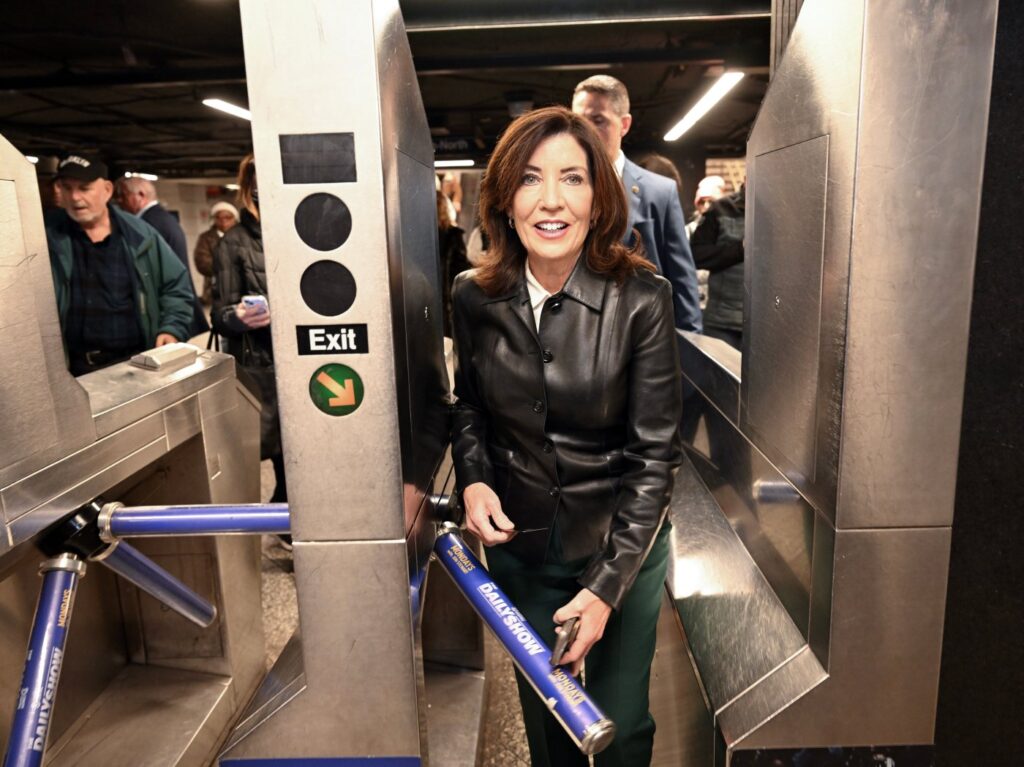
New York Governor Kathy Hochul is facing a critical decision on a recently passed bill that mandates the use of two-person crews on every subway train. The legislation, which prohibits one-person train operation (OPTO) and zero-person train operation (ZPTO), was approved with overwhelming support in both houses of the state legislature, garnering a vote of 144 to 0 in the Assembly and 57 to 2 in the Senate. The deadline for Hochul to veto the bill is set for the end of the year.
The origins of this bill trace back to 1995, when the then-President of the Transit Authority, Alan Kiepper, explored the feasibility of fully automating the L train. This initiative gained momentum with the implementation of Communications-Based Train Control (CBTC) technology in 2003, which allows for automated train operations. Despite the potential for modernization, the Transport Workers Union Local 100, under various leaderships over the years, has consistently advocated for a two-person crew requirement, leading to the bill’s resurrection this year after decades of stagnation.
Critics argue that mandating two-person crews represents an outdated approach to subway operations. The Marron Institute at New York University conducted a comprehensive study of approximately 300 subway systems worldwide. Findings revealed that New York is one of the few major cities still requiring two crew members per train, a practice more commonly found in the past. In contrast, cities like London, Paris, and Berlin, all of which have older subway systems, successfully operate with fewer personnel.
Looking at the broader context, cities such as Tokyo, Beijing, and Seoul manage to transport more passengers than New York without maintaining a two-person crew standard. In the United States, systems in Boston, Chicago, Washington D.C., Philadelphia, and Los Angeles have adopted one-person train operation, reflecting a trend towards efficiency and modernization.
The only instances of two-person train operation in North America are limited. In Toronto, only one line operates with this requirement, while in Seoul and Tokyo, it is a minority of lines. The Marron Institute’s research indicates that even those systems are transitioning towards one-person crews, echoing a global shift towards automation and efficiency in public transit.
Despite the bill’s passage, dissenting voices in Albany, including Republican Assembly members Joe Griffo and Mark Walczyk, have raised concerns about the implications of this legislation for the future of the Metropolitan Transportation Authority (MTA). They argue that such micromanagement undermines the authority’s ability to modernize and adapt to changing technological landscapes.
The MTA has faced numerous challenges in recent years, with calls for modernization growing louder in light of rising operational costs and the need for improved service efficiency. Implementing a two-person crew requirement could hinder necessary advancements, further isolating New York’s subway system from global standards.
As the deadline approaches, Governor Hochul’s decision will shape the future of subway operations in New York City. A veto would signal a commitment to modernization and operational efficiency, while signing the bill into law could cement a retrogressive approach to public transit in one of the world’s largest cities. Advocates for the veto urge the Governor to consider the broader implications for the MTA and the city’s transit system.






